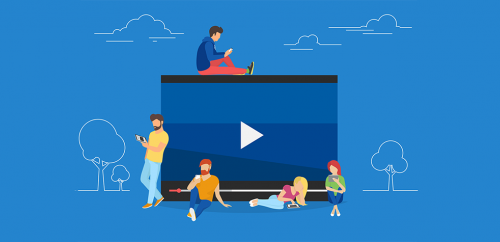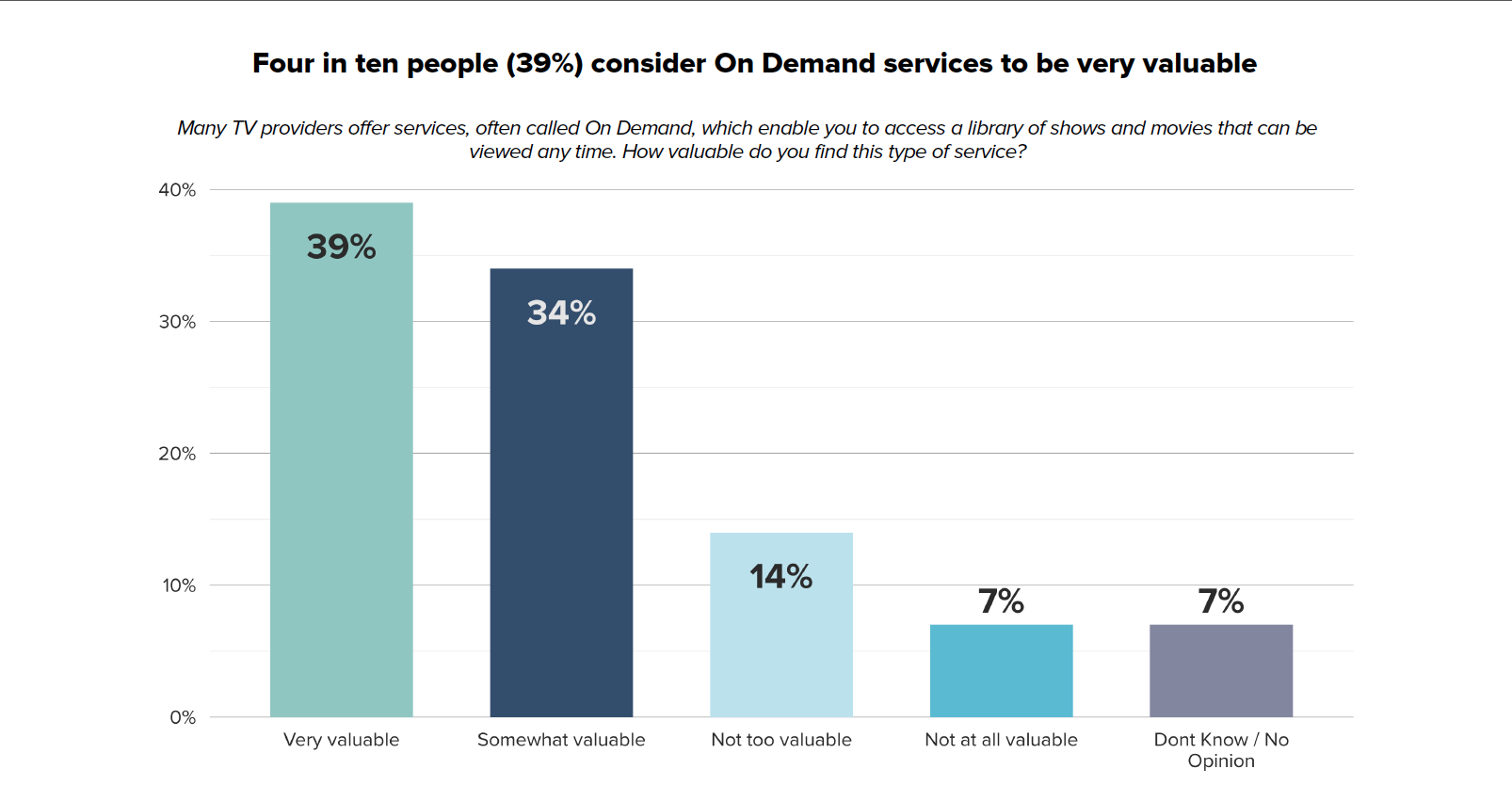Nothing has had a more profound effect over the last 10 years on TV than time shifting. The ability to watch a show at any time has not just made watching TV easier, it’s made it more fun. It’s made it possible save up shows over the course of the week and watch them all on Sunday evening. It’s made the concept of binge watching possible. And it’s made scheduling time to watch TV with family and friends easier.
Time shifting TV is possible through a variety of features and technologies. Recording shows on a DVR is one of them, but not the only one. According to a recent survey NCTA commissioned from Morning Consult, DVRs are not the most valuable feature either. That award goes to on-demand programming. The survey showed that 73 percent of respondents say on-demand services are either very valuable or somewhat valuable. Only 7 percent said on-demand was not at all valuable.
Another technology that has allowed for time shifted TV is multi-platform viewing. The ability to watch TV while commuting to work or standing in line has made catching up on TV shows incredibly convienient. The same survey from Morning Consult weighed in on the issue of multi-screen viewing as well and revealed that 67 percent of viewers consider the ability to view TV programs on a variety of devices to be very valuable or somewhat valuable. Only 8 percent felt it was not valuable at all.
It’s not surprising to discover so many people value the ability to watch TV where they want, when they want. But the Morning Consult survey also goes to show that many people may not realize just how convenient and easy-to-use time-shifting technologies can be. There’s still a lot of people who have access to these great services and don’t take advantage of them. So to those people, we say give it a shot. You’ll be surprised how much more fun you can have watching TV when you’re watching it on your terms.
_________
Morning Consult Conducted a survey of 2000 registered voters between December 8th and December 11th.The data were weighted to approximate a target sample of registered voters based on age, race/ethnicity, gender, educational attainment, region, annual household income, home ownership status and marital status. The survey has a margin of error +/- 2%. Of the 2000 respondents, 73 percent said they subscribe to a cable, satellite or telco TV service. Only these respondents were asked the questions in the above blog.

